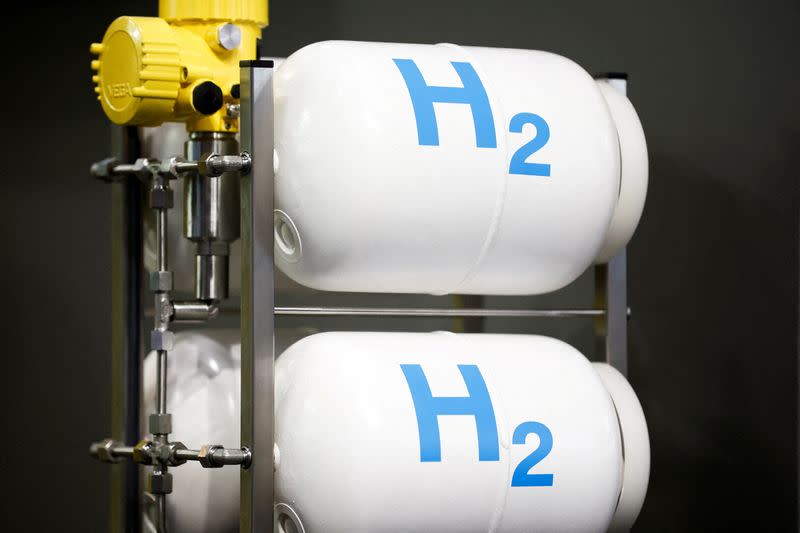Germany could import up to 100 TWh of green hydrogen via pipelines by 2035, study shows

By Riham Alkousaa
BERLIN (Reuters) - Germany could cover up to 100 terawatt-hours (TWh) of its annual energy needs with imports of green hydrogen via pipelines from neighbouring countries by the mid-2030s, covering a significant share of its projected demand, a study showed on Thursday.
Berlin is seeking to expand the use of hydrogen as an energy source to cut greenhouse emissions for highly polluting industrial sectors that cannot be electrified, such as steel and chemicals, and cut dependency on imported fossil fuel.
Produced using solar and wind power, green hydrogen is a pillar of Germany's planned energy transition, The study by Berlin-based Agora Energiewende and Agora Industry think tanks said that by 2035 hydrogen could cover 11.2% of the country's projected 894 TWh total energy demand.
But Germany will need to import around 50% to 70% of its hydrogen due to its limited renewable energy resources.
Currently, Germany uses around 55-60 TWh of hydrogen per year but it is produced almost exclusively from fossil fuels, data by the economy ministry showed.
The study said that by 2030 Germany could produce 11 TWh of hydrogen and import about 17 TWh of green and some 15 TWh of blue hydrogen, produced from natural gas, via pipelines. That would cover less than half of Germany's total hydrogen demand projected to reach 95 TWh to 130 TWh by the end of the decade.
However, by leveraging existing natural gas infrastructure in Europe, Germany could boost pipeline imports to between 60 TWh and 100 TWh by 2035, the study said.
"To achieve climate neutrality, Germany needs a secure and cost-effective supply of renewable hydrogen. Pipeline imports from Europe play a crucial role in this," Simon Mueller, Agora Energiewende director, said in statement.
To reach this imports potential, Germany will need a financing model and will have to move quickly with agreements on cost-sharing among involved countries, Mueller said.
"This is the only way the required quantities of green hydrogen can be delivered in the first half of the next decade," he said.
Hydrogen producers and pipeline operators will also need assurances about future hydrogen demand from Germany, Mueller added.
The study examined five potential hydrogen pipeline corridors to Germany, considering factors such as production potential, political support, and technical complexity.
Promising corridors include imports from Denmark and Norway via the North Sea, and potentially from Sweden and Finland via the Baltic Sea in a later stage due to the distance and technical complexity, it added.
In the long term, pipelines from Southern Europe and North Africa, especially Spain and Tunisia, can play a significant role, in addition to possible imports from the United Kingdom, Portugal, Algeria, Greece, and Ukraine.
(Reporting by Riham Alkousaa; Editing by Tomasz Janowski)

 Yahoo Finance
Yahoo Finance 